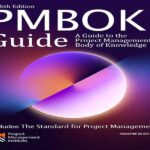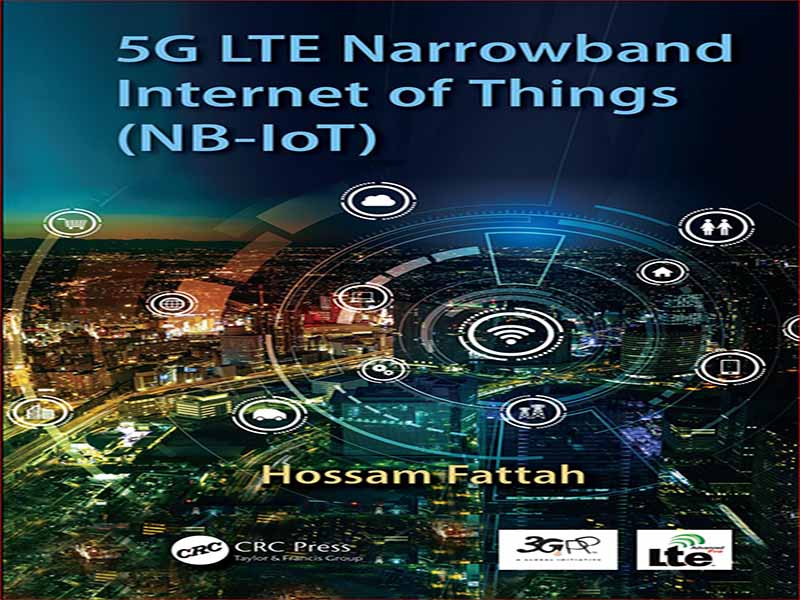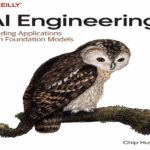- عنوان کتاب: 5G LTE Narrowband Internet of Things (NB-IoT)
- نویسنده/انتشارات: Hossam Fattah
- حوزه: اینترنت اشیاء باند باریک
- سال انتشار: 2019
- تعداد صفحه: 263
- زبان اصلی: انگلیسی
- نوع فایل: pdf
- حجم فایل: 7.25 مگابایت
ارتباطات بی سیم پهن باند به طور چشمگیری در طول چند دهه گذشته تکامل یافته است: WiFi، WiMax، ZigBee، بلوتوث، RFID، GSMr، UMTSTM و _nally LTETM. هزاران میلیون کاربر در سراسر جهان از این فناوری های بی سیم به راحتی استفاده کرده اند. این به این دلیل است که اکثر آنها از یک فناوری صدا محور به فناوری تبدیل شده اند که از برنامه های چند رسانه ای غنی، پخش ویدئو، مرور اینترنت غنی، چت و صدا از طریق شبکه های IP قدیمی پشتیبانی می کند. LTE جدیدترین فناوری سلولی باند پهن است که هدف آن افزایش نرخ داده و بهرهبرداری از پیشرفتها در پردازش سیگنال دیجیتال مانند تشکیل پرتو، MIMO و کدگذاری کانالهای مختلف است. LTE اکنون توسط بسیاری از اپراتورهای تلفن همراه در سراسر جهان استفاده می شود. شبکههای تلفن همراه موجود مانند GSM قدیمی، CDMA2000r و WCDMA در حال حاضر به دلیل طرح مدولاسیون e_cient آن، معروف به OFDM، و سایر ویژگیهای پیشرفته که عصر جدیدی از برنامهها مانند اینترنت اشیا و ارتباطات جانبی را امکانپذیر میسازد، به LTE همگرا میشوند. مرحله بعدی در پیشرفت LTE، پیشنهاد عظیمی است که در حال حاضر تحت استانداردسازی توسط 3GPPTM (پروژه مشارکت نسل سوم) برای تبدیل LTE به یک فناوری LTE نسل پنجم با هدف مدیریت فناوری بی سیم متفاوت است. استانداردهای LTE، WiFi، Blue-tooth و سلولی قدیمی تحت یک چتر به نام 5G. علاوه بر این، پیشرفت جدید LTE شامل پشتیبانی کامل از چندین برنامه کاربردی است که قبلاً هرگز در هیچ فناوری بی سیم پشتیبانی نشده بودند. این شامل برنامههایی مانند واقعیت افزوده و مجازی، اینترنت اشیا، ارتباط دستگاه به دستگاه، ارتباط نوع ماشین، تجمع حامل، اتصال دوگانه، گرههای رله، اتومبیلهای خودران، برنامههای کاربردی حیاتی، اتوماسیون و کنترل صنعت و بسیاری از موارد است. دیگران. همه این فناوریها تحت یک چتر جمعآوری شدهاند که در نسخه 15 شروع میشود و آنچه را که خانواده استانداردهای 5G دهه آینده نامیده میشود، هدف قرار میدهند که در حال حاضر در مجموعه اولیه انتشار و استانداردسازی توسط 3GPP و ITU هستند. ظاهراً خانواده استانداردهای LTE از نظر پیچیدگی و ویژگیها رشد چشمگیری داشته است. اگرچه فناوری اینترنت اشیاء باند باریک LTE (NB-IoT) توسط دستگاه های کم پیچیدگی آشکار می شود، اما پشته پروتکل و عملکرد آن همچنان یک چالش است. پشته پروتکل اصلی و عملیات آن توسط 3GPP در بسیاری از مشخصات فنی و گزارش ها تعریف شده است که نیاز به مطالعه دقیق، درک و مرور این مشخصات دارد. پروتکلها، برنامهها یا زیرساختهای مختلف دیگری هنوز برای عملکرد کامل NB-IoT در فضای باز مورد نیاز هستند. این کتاب فناوری جدید 5G LTE NB-IoT را بر اساس نسخه 15، پشته پروتکل، معماری، عملکرد و چالشهای آن ارائه میکند. این کتاب جنبههای مختلف NB-IoT را پوشش میدهد و جزئیات لازم را در مورد این فناوری ارائه میکند، در عین حال آن را تا حد امکان در دیدگاههای ساده ارائه میکند. این کتاب یکی از معدود کتاب هایی است که هدف آن ارائه یک فروشگاه تک مرحله ای برای یکی از ویژگی های مهم 5G LTE است. تمرکز این کتاب بر ارائه جزئیات جامع در مورد یک ویژگی 5G LTE است که NB-IoT سلولی است. NB-IoT فناوری بی سیم بعدی است که دنیایی از اتصال دیجیتال را در خانه، شهر و ساختمان امکان پذیر می کند. پیشبینی میشود دستگاههای متصل NB-IoT به صدها هزار دستگاه متصل در هر کیلومتر مربع برسند. این کتاب جزئیات 5G LTE NB-IoT را در فصلهای مختلف پوشش میدهد. در فصل 2، تاریخچه دستگاه های LTE، NB-IoT و الزامات و کاربردهای آنها را معرفی می کنیم. فصل 3{7 پشته پروتکل هسته 3GPP NB-IoT را پوشش می دهد و زیرلایه های RRC، PDCP، RLC، MAC و PHY را توضیح می دهد. فصل 8 توضیح می دهد که چگونه چارچوب کیفیت خدمات در شبکه اصلی برای دستگاه های NB-IoT پشتیبانی می شود. در نهایت، فصل 9 موارد استفاده و توصیههای استقرار برای شبکهها و دستگاههای NB-IoT را پوشش میدهد.
Broadband wireless communication has evolved dramatically during the past few decades: WiFi, WiMax, ZigBee, Bluetooth, RFID, GSMr, UMTSTM, and _nally LTETM. These wireless technologies have been readily used by thousands of millions of users around the globe. This is because most of them transformed from a voice-centric technology, to a technology that supports rich multimedia applications, video stream- ing, rich Internet browsing, chatting, and voice over legacy IP networks. LTE is the most recent broadband cellular technology aiming at increasing data rates and exploiting advances in digital signal process- ing such as beam-forming, MIMO, and di_erent channel coding. LTE is now used by many multiple mobile operators around the globe. Existing mobile networks such as legacy GSM, CDMA2000r, and WCDMA are currently converging into LTE due to its e_cient modulation scheme, known as OFDM, and other advanced features that enable a new era of applications such as Internet of Things and sidelink communication. The next phase in LTE advancement is the huge proposal cur- rently under standardization by 3GPPTM (3rd Generation Partnership Project) to transform LTE into a new _fth generation LTE technology aiming at managing di_erent wireless technology; LTE, WiFi, Blue- tooth, and legacy cellular standards under one umbrella called 5G. Moreover, the new LTE advancement includes solid support for sev- eral applications that have never been supported before in any wireless technology. This includes applications like augmented and virtual real- ity, Internet of Things, device-to-device communication, machine type communication, carrier aggregation, dual connectivity, relay nodes, autonomous cars, mission-critical applications, industry automation and control, and many others. All of these technologies are bundled under one umbrella starting in Release 15 and targeting what is called next decade 5G family of standards that are currently in its initial set of release and standardization by 3GPP and ITU. Apparently, the LTE family of standards has grown signi_cantly in complexity and features. Although LTE Narrowband Internet of Things (NB-IoT) technology is manifested by low-complexity devices, its pro- tocol stack and operation remain a challenge. The core protocol stack and its operations are de_ned by 3GPP in many technical speci_cations and reports which requires careful study, understanding, and browsing of these speci_cations. Di_erent other protocols, applications, or infra- structures are still needed for the complete operation of NB-IoT in the _eld. This book presents the new 5G LTE NB-IoT technology based on Release 15, its protocol stack, architecture, operation, and challenges. The book covers di_erent aspects of NB-IoT and provides necessary details about this technology, while at the same time presents it in simplistic views, as much as possible. This book is one of few books that aims at providing a single-stop shop for one important feature of 5G LTE. The book focuses on pro- viding comprehensive details about a single 5G LTE feature, which is the cellular NB-IoT. NB-IoT is the next wireless technology to enable a world of digital connectivity in home, city, and building. NB-IoT con- nected devices are projected to reach a number of hundreds of thou- sands connected devices per square kilometer. This book covers the details of 5G LTE NB-IoT across di_erent chapters. In Chapter 2, we introduce the history of LTE, NB-IoT devices, and their requirements and applications. Chapters 3{7 cover the core 3GPP protocol stack of NB-IoT and explain the RRC, PDCP, RLC, MAC, and PHY sublayers. Chapter 8 explains how the quality of service framework is supported in core network for NB-IoT devices. Finally, Chapter 9 covers use cases and deployment recommendations for NB-IoT networks and devices.
این کتاب را میتوانید از لینک زیر بصورت رایگان دانلود کنید:




































نظرات کاربران